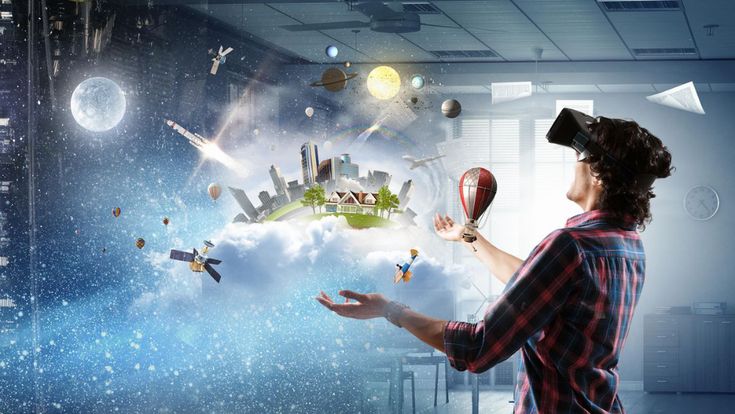Extended Reality (XR) in Workplace Collaboration: Transforming How We Work Together

Extended Reality (XR) is an umbrella term that encompasses various immersive technologies, including virtual reality (VR), augmented reality (AR), and mixed reality (MR). These technologies are increasingly being adopted in workplace collaboration, reshaping how teams communicate, share information, and collaborate on projects. XR enables more engaging, interactive, and efficient collaboration, bridging geographical gaps and enhancing productivity.
Key Features of XR in Workplace Collaboration
- Immersive Environments: XR creates immersive virtual spaces where team members can interact as if they were physically together, fostering a sense of presence and connection.
- Enhanced Communication: XR tools can enhance communication by allowing users to visualize complex data and concepts, making it easier to understand and discuss ideas.
- Real-Time Collaboration: XR facilitates real-time collaboration, enabling teams to work together on projects regardless of their physical locations.
- Interactivity: XR environments allow users to manipulate digital objects, conduct simulations, and engage in hands-on learning experiences, promoting active participation.
Applications of XR in Workplace Collaboration
- Remote Team Meetings
- XR can transform virtual meetings by creating immersive environments where participants can interact with 3D models, share presentations, and brainstorm ideas as if they were in the same room.
- Example: Using VR headsets, team members can meet in a virtual conference room to discuss project plans, visualize data, and collaborate on designs.
- Training and Onboarding
- XR offers engaging training experiences for employees, allowing them to practice skills and learn new concepts in realistic simulations.
- Example: New employees in a manufacturing company can use AR glasses to receive real-time instructions while interacting with complex machinery, enhancing their onboarding experience.
- Design and Prototyping
- In design industries, XR can facilitate collaborative prototyping by allowing teams to visualize and interact with 3D models before physical production.
- Example: Architects can use AR to overlay digital building designs onto physical sites, enabling stakeholders to walk through and provide feedback on proposed structures.
- Project Management
- XR can enhance project management by providing a shared visual space for teams to track progress, identify bottlenecks, and brainstorm solutions collaboratively.
- Example: Project managers can use VR tools to create visual dashboards that display project timelines, task assignments, and team collaboration in real-time.
- Sales and Marketing
- XR technologies can elevate sales presentations by allowing potential clients to interact with products in a virtual environment, enhancing the buying experience.
- Example: A car manufacturer can use AR to let customers visualize and customize vehicle models before making a purchase decision.
Benefits of XR in Workplace Collaboration
- Improved Engagement: XR creates more engaging and interactive experiences, leading to higher levels of participation and collaboration among team members.
- Enhanced Understanding: Visualizing complex concepts and data in 3D allows teams to better grasp information, leading to more informed decision-making.
- Increased Productivity: By streamlining communication and collaboration, XR can enhance productivity, enabling teams to complete projects faster and more efficiently.
- Reduced Travel Costs: XR reduces the need for physical travel by enabling remote collaboration, helping companies save on travel expenses while maintaining effective communication.
- Accessibility: XR technologies can make collaboration more accessible for teams with diverse needs, allowing individuals to participate in ways that suit their preferences and abilities.
Challenges of Implementing XR in the Workplace
- Technology Adoption: The successful implementation of XR requires organizations to invest in hardware, software, and training, which can be a barrier for some companies.
- User Experience: Ensuring a seamless user experience is critical for adoption. Poorly designed XR applications can lead to frustration and disengagement among users.
- Cost Considerations: While XR can save costs in the long run, the initial investment in technology and training may deter some organizations from adopting these solutions.
- Privacy and Security: As with any technology that involves data sharing and communication, ensuring the privacy and security of sensitive information in XR environments is essential.
- Integration with Existing Systems: Integrating XR technologies with existing collaboration tools and workflows can be challenging, requiring careful planning and execution.
Future of XR in Workplace Collaboration
The future of XR in workplace collaboration looks promising as technology continues to advance. Here’s what we can expect:
- Increased Accessibility: As XR devices become more affordable and user-friendly, more organizations will adopt these technologies for collaboration.
- Enhanced Interoperability: Improved integration of XR with existing collaboration tools will facilitate seamless workflows and enhance user experiences.
- AI Integration: Combining XR with artificial intelligence will lead to smarter, more adaptive collaborative environments that can provide personalized experiences for users.
- Broader Adoption Across Industries: As more industries recognize the benefits of XR for collaboration, its use will expand beyond technology and design sectors into areas like healthcare, education, and logistics.
Conclusion
Extended Reality (XR) is revolutionizing workplace collaboration by creating immersive, interactive environments that enhance communication, engagement, and productivity. By enabling remote teams to work together as if they were physically present, XR technologies are bridging geographical gaps and transforming how we approach collaboration. Despite the challenges of implementation, the potential benefits of XR make it an exciting frontier for organizations looking to innovate and improve their collaborative efforts in the modern workplace.






Responses